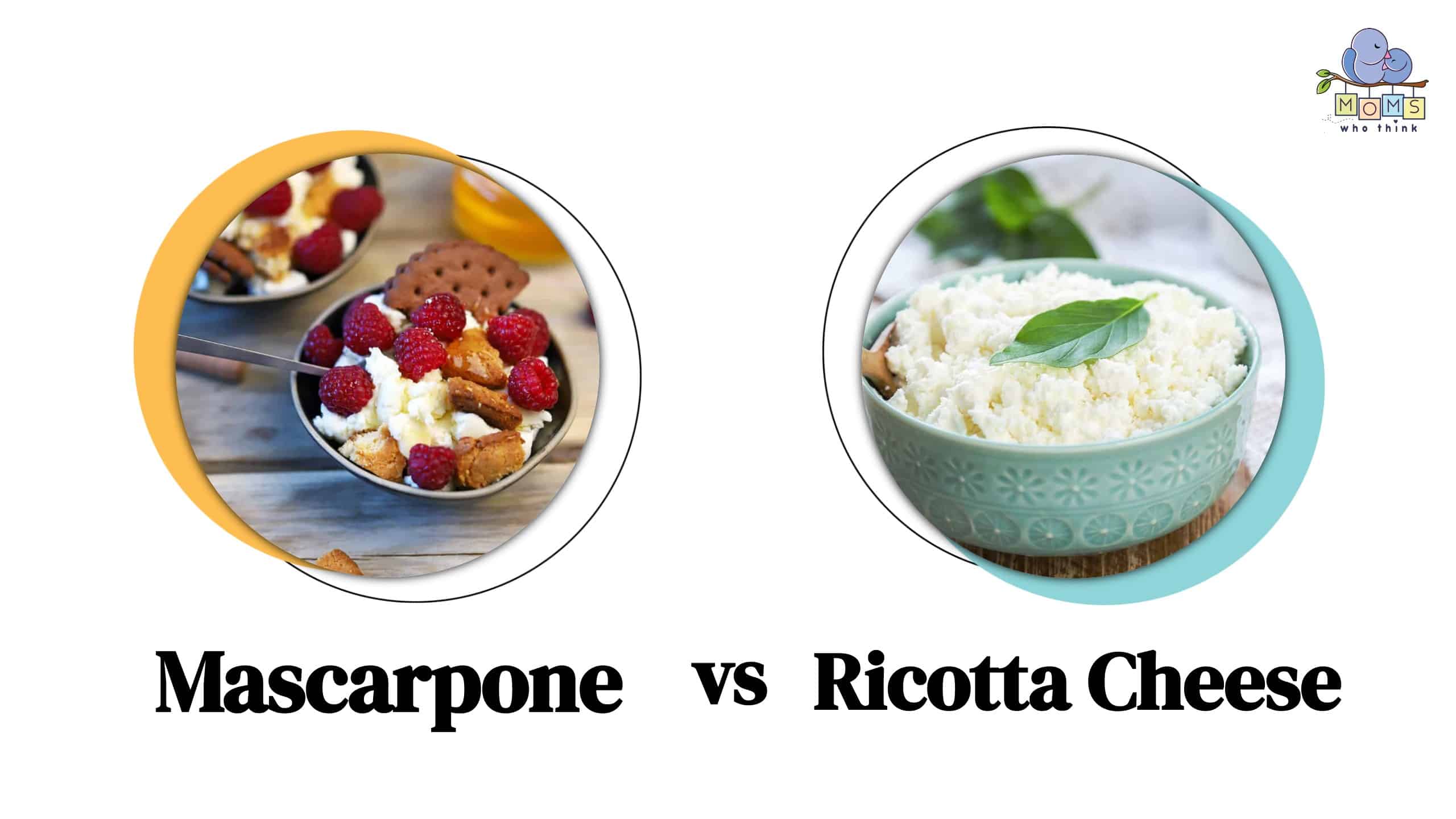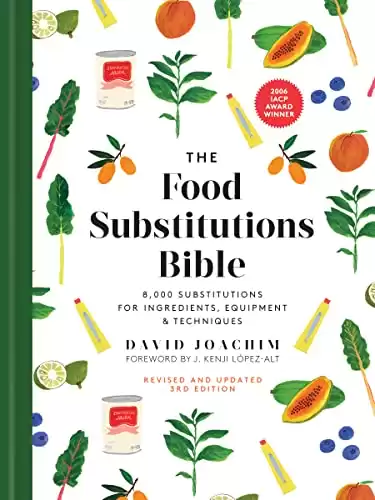As a parent, you're constantly on the lookout for quick and easy meal solutions that don't skimp on flavor. Italian dishes are a simple answer for your next meal, and adding the right cheese to your recipe can make all the difference. This is where mascarpone and ricotta come in – two Italian-based cheeses that offer richness and depth. However, both of these cheeses have distinct differences making it hard to know which one is best for your next dish.
In this blog post, we'll explore the differences between mascarpone and ricotta cheese, including their flavor profiles, textures, nutritional values, and uses in the kitchen. If you're looking to save time and make meal planning a breeze, read on to have a better understanding of which cheese to use.
Mascarpone vs. Ricotta Cheese: What Is the Difference?
The primary difference between mascarpone and ricotta cheese is that mascarpone has a creamier texture that makes it ideal for spreading on deserts while ricotta cheese is more grainy. In terms of flavor, mascarpone is rich and buttery with a slightly sweet taste. Ricotta, on the other hand, has a more bright, acidic flavor. Mascarpone is popular in Italian desserts like tiramisu and cannoli while ricotta is popular in pastas and pizza. However, both cheeses are versatile and can be used in a number of dishes. Finally, mascarpone has more calories per ounce and higher fat content than ricotta, which could impact your decision on which of these two kinds of cheese to use.
Let's take a closer look at each cheese to better understand what sets them apart.
What Is Mascarpone?

©Chatham172/Shutterstock.com
Mascarpone is an ivory-colored, creamy, rich, and fresh cheese. It's often referred to as the Italian version of cream cheese, though it tends to be even richer and creamier than the cream cheese we typically see in the local grocery store.
- The must-have convenient reference guide for every home cook!
- Includes more than 8,000 substitutions for ingredients, cookware, and techniques.
- Save time and money on by avoiding trips to grab that "missing" ingredient you don't really need.
Origin
Mascarpone is considered the Italian cream cheese because it originated in the Lombardy region of northern Italy. While the exact origins are unclear, the Britannica encyclopedia states that this cheese was likely first produced in the 16th century.
Today, mascarpone is still famously made in Italy. But it's also produced worldwide and can be found at most large grocery stores or specialty cheese shops.
Flavor
Mascarpone is known for its rich flavor and slightly sweet, tangy taste. Because it's made from heavy cream that comes from cow's milk, it also tends to have a milky flavor.
Texture and Appearance
Mascarpone cheese is known for its high-fat content, which can range from 60-75%. This can be nearly twice as much as cream cheese, but it's also what gives this ivory-colored sweet cheese its signature velvety texture. Mascarpone is also easy to spread and incredibly smooth.
How Mascarpone Cheese Is Made
Mascarpone has an incredibly easy creation process. It's simply made from heavy cream and an acid. Most commercial producers will use citric acid, but lemon juice can be used if you're making this cheese at home.
After the cream has been heated, acid is added to create curdles. The curdles are then drained from the leftover liquid, also known as the whey, and the resulting cheese is packaged and refrigerated. Because mascarpone is a fresh cheese, it can be eaten on the same day.
Popular Uses
Mascarpone is most traditionally used in Italian desserts like tiramisu, cannoli, and cheesecake. However, because of its versatile, creamy texture, mascarpone can also be used in savory dishes like risotto, pasta sauces, and spreads.
What Is Ricotta Cheese?
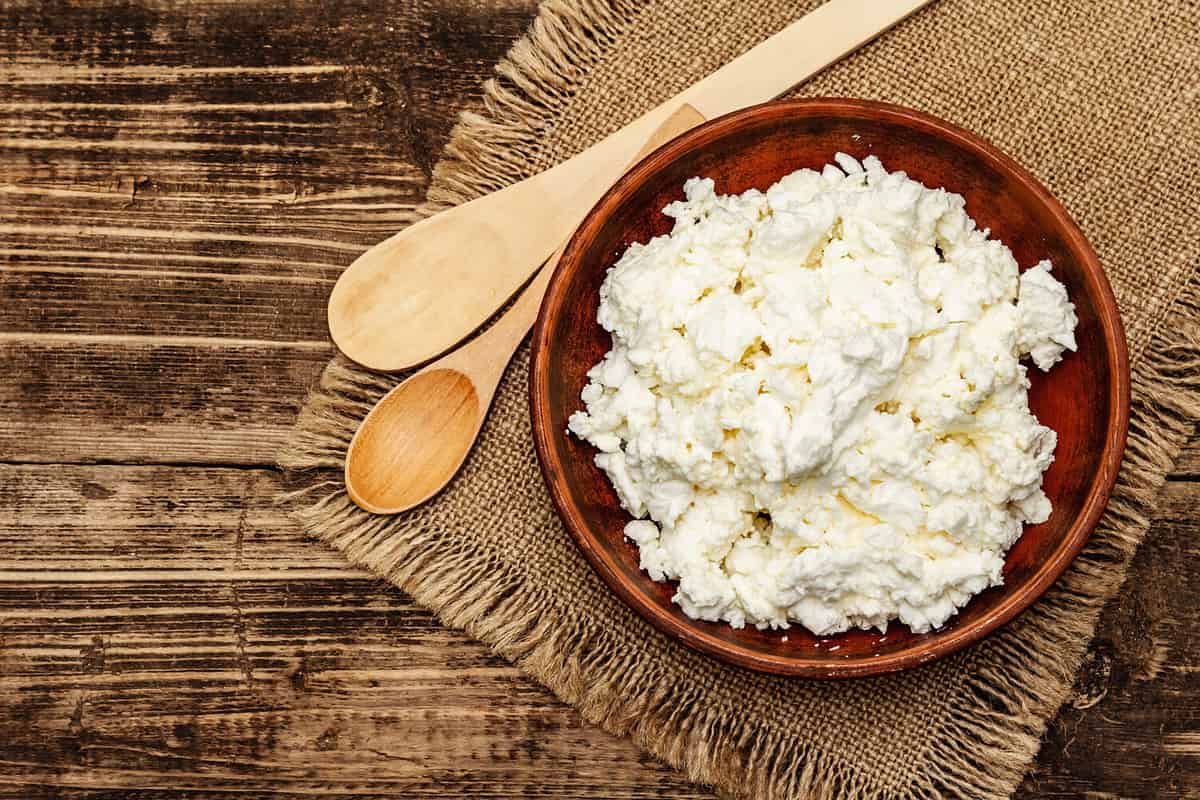
©Chatham172/Shutterstock.com
Ricotta cheese is soft and creamy with a mild, somewhat sweet flavor and grainy-like texture. Unlike mascarpone, ricotta is made with whey that's separated from the curds during the cheese-making process.
Origin
According to Science Direct, ricotta originates from Italy and means “recooked” in Italian. This term refers to the fact that ricotta is a whey cheese, as in, it's made by reheating the whey left over from making other cheeses. In Italy and other parts of the world, this cheese is traditionally made from cow's, sheep's, or goat's milk. In the United States, it's most commonly made from cow's milk.
Flavor
It's important to note that there are various types of ricotta cheese. Fresh ricotta (which is what we're talking about here), is rich and creamy and has a mild taste with slightly more tanginess than mascarpone. Aged ricotta, also known as ricotta salata, is drier, saltier, and has a stronger flavor. The flavor can also change depending on what kind of milk is used in the production process.
Texture and Appearance
Ricotta is known for its signature grainy-like texture. While it's similar to mascarpone in that it's soft, fresh, and creamy, ricotta has a much lighter feel and appearance. The lightness comes from the cheese being lower in fat as it only contains the fat that's left over in the whey used to make it.
How Ricotta Is Made
In the United States, fresh ricotta is made from whole cow's milk. An acid is added to the milk which creates curds. The curds are then skimmed off the top and what's leftover is ricotta.
In Italy and other parts of the country, however, ricotta is typically made with the whey that's leftover from other cheeses with a small amount of milk added. The leftover whey usually contains rennet already. It's then heated (which is where the “recooked” term comes into play), which creates curds. The curds are strained and formed together to make fresh ricotta.
As mentioned, there are various types of ricotta and each has a slightly different production process. While fresh ricotta is what we're talking about today, other aged and smoked variations also exist, including:
- Ricotta Salata, which is an aged and firmer, saltier version of the fresh cheese.
- Ricotta Infornata, a baked version of the cheese that is popular in Sicily.
- Smoked Ricotta, which has a smokey and savory flavor.
- Ricotta Forte, which has the strongest flavor due to the long aging process of about a year.
Popular Uses
Because of ricotta's versatility, it can be used in both savory and sweet dishes. Similar to mascarpone, it's often found in Italian dishes due to its Italian roots and is used in a variety of ways. Ricotta is most popularly used as a filling for pasta dishes like ravioli and cannoli or as a topping for pizzas. It can also be found as a lighter ingredient in desserts like cheesecake and tiramisu.
Mascarpone vs. Ricotta Cheese Nutrition
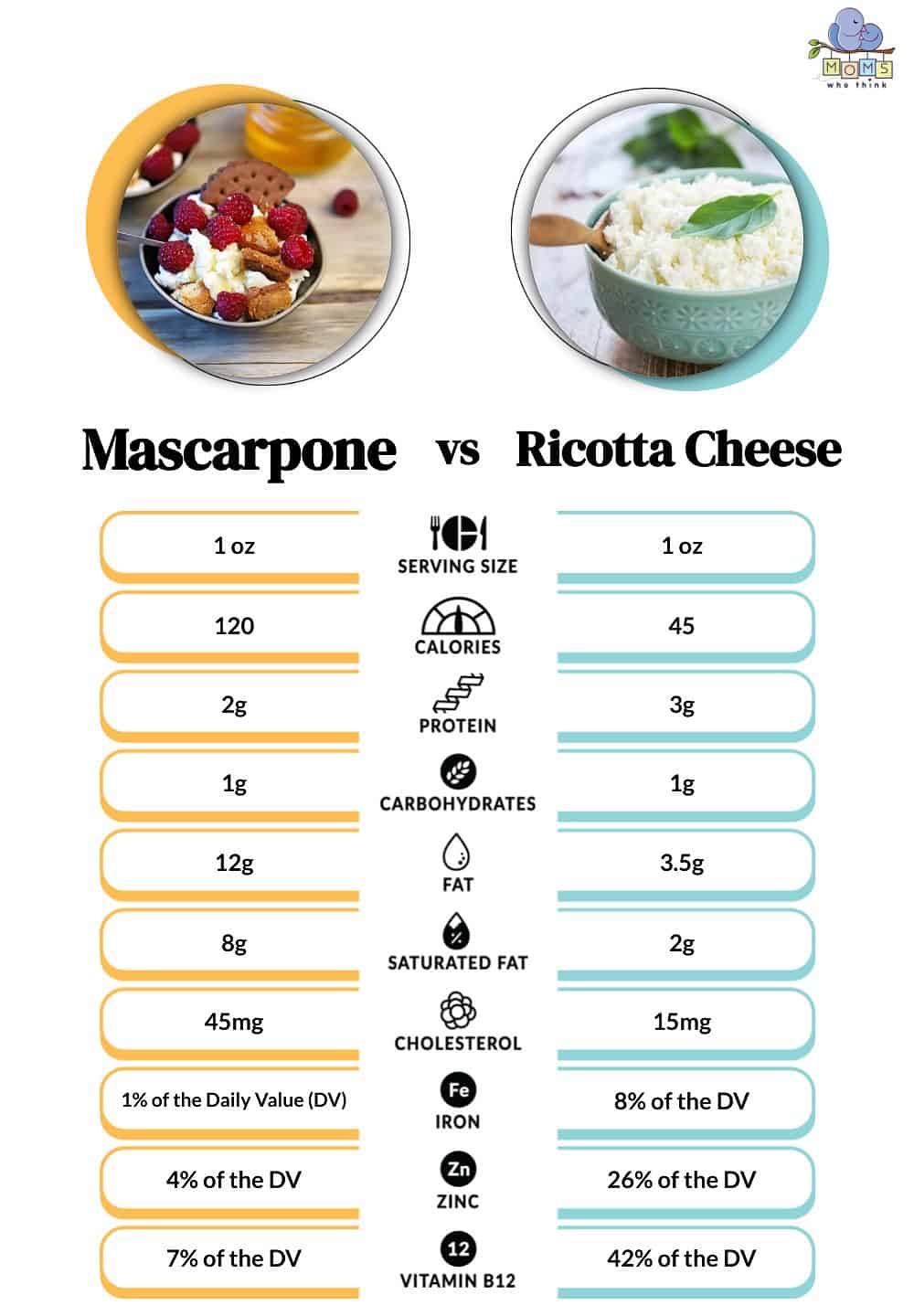
©
Calories in mascarpone come almost exclusively from fat. The cheese has about 120 calories per ounce, with 12 grams of fat. About 2/3 of those fat grams are saturated fat. The cheese is low in carbohydrates. By comparison, ricotta is a much less calorie-dense cheese. It has about 45 calories per ounce, with about 3 grams of fat and protein in each ounce.
Can You Substitute Mascarpone for Ricotta Cheese?
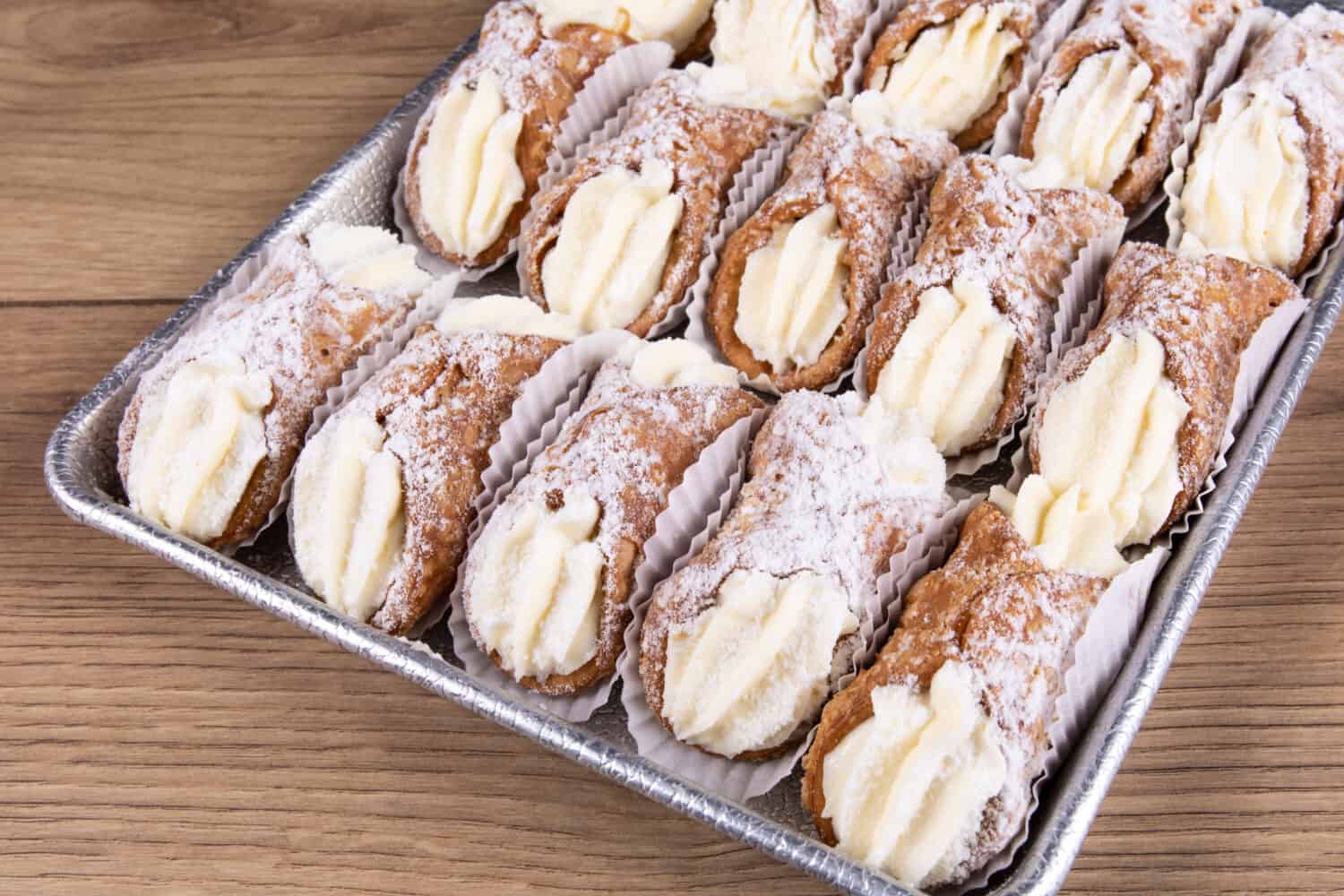
©Toasted Pictures/Shutterstock.com
Unfortunately, these cheeses are different enough that they do not work well as direct substitutes in most recipes. Though these cheeses may seem similar, mascarpone will give your recipe a creamier finish, while ricotta offers a slightly different texture and tangier flavor.
- The must-have convenient reference guide for every home cook!
- Includes more than 8,000 substitutions for ingredients, cookware, and techniques.
- Save time and money on by avoiding trips to grab that "missing" ingredient you don't really need.
However, not all hope is lost if you're in need of a replacement for either cheese. Read on to discover the best substitutes for both mascarpone and ricotta.
Best Substitutes for Mascarpone
If you're in a pinch and in need of a quick replacement for mascarpone, here are a few options you can use:
Cream Cheese
Cream cheese has a similar creamy texture to mascarpone, which makes it a great replacement in recipes like cheesecake or frosting. Keep in mind, however, that cream cheese has a tangier flavor than mascarpone, so you may need to adjust the sweetness of the recipe accordingly.
Sour Cream
Sour cream is a great substitute for mascarpone in recipes that call for a tangy flavor and a smooth texture. It does tend to have a thinner consistency, however, so you may need to adjust your recipe to make up for this difference.
Greek Yogurt
While Greek yogurt has a lower fat content than mascarpone which can slightly affect the overall texture and flavor of your dish, it's still a great substitute in recipes that call for a creamy texture and a tangy flavor.
Whipped Cream
Whipped cream is a wonderful substitute for mascarpone in recipes like frosting or tiramisu that need a light and fluffy texture. It does tend to be sweeter than mascarpone, though, so the sweetness level of your recipe may need to be adjusted to accommodate.
Best Substitutes for Ricotta
If you don't have ricotta on hand or prefer not to use it, here are a few substitutes for this savory cheese as well:
Cottage cheese
With its similar texture, cottage cheese makes an ideal substitute for ricotta, especially in recipes like lasagna or stuffed shells where a grainy texture is desired. Cottage cheese does have a little more tanginess to it, however, so keep that in mind as you cook.
Feta
While feta cheese can have a stronger overall flavor than ricotta, it's still a good substitute in recipes that call for the same crumbly texture and tangy taste. Feta works well as a substitute in recipes like dips and salads.
Farmer's Cheese
Farmer's cheese offers the same crumbly texture and tangy flavor, making it an option if you're looking for a substitute. It can be higher in fat, though, so keep that in mind if you're wanting to make a dish that's lower in fat, like ricotta.
Mascarpone Recipes
Ricotta Cheese Recipes
Print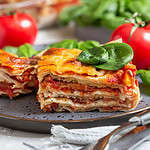
Vegetarian Lasagna
Ingredients
1 container (32 oz.) ricotta cheese
3 cups shredded mozzarella cheese, divided
1/2 cup grated Parmesan cheese, divided
1/4 cup chopped fresh parsley
1 egg, beaten
1 jar (24 oz.) Tomato and Basil Pasta Sauce
12 lasagna noodles, cooked
Instructions
1. Heat oven to 350°F.
2. Mix ricotta, 2 cups mozzarella, 1/4 cup Parmesan, parsley and egg until blended.
3. Spread 3/4 cup pasta sauce onto bottom of 13×9-inch baking dish; top with 3 lasagna noodles and 1/3 of the ricotta mixture.
4. Repeat layers of sauce, noodles and ricotta mixture twice; cover with remaining noodles and sauce.
5. Sprinkle with remaining mozzarella and Parmesan.
6. Bake 45 min. or until heated through. Let stand 15 minutes before slicing and serving with warmed Italian bread.
Final Thoughts
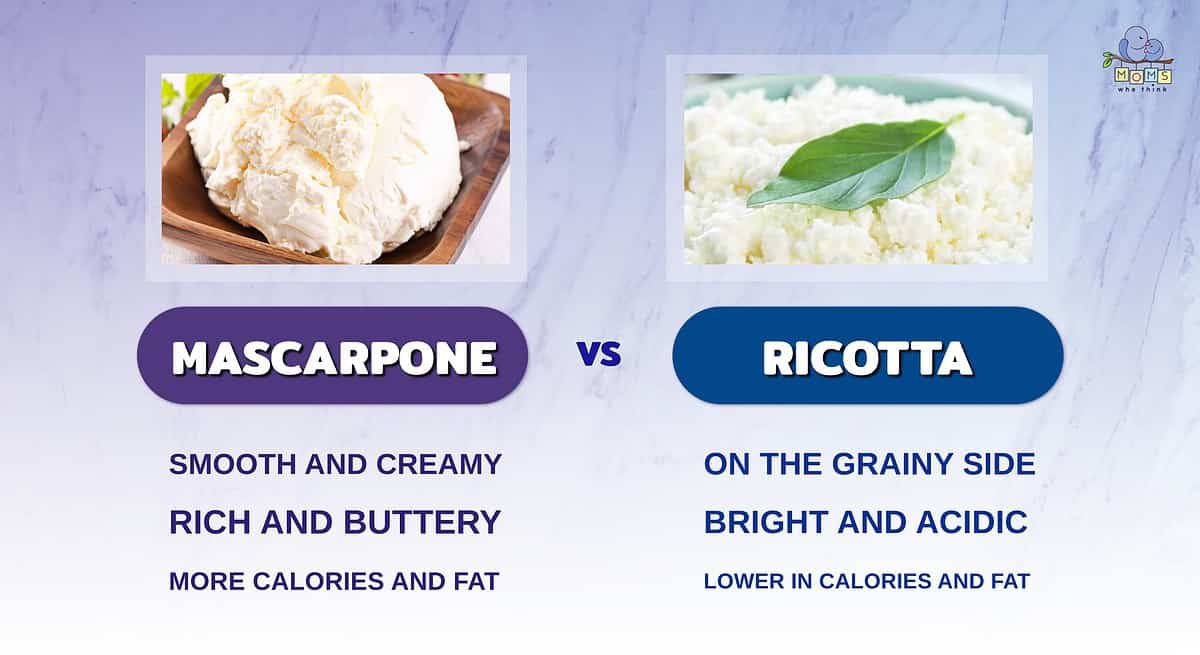
- Ricotta and mascarpone have very different flavors; one is rich and buttery, while the other is on the acidic side.
- Mascarpone is great in desserts due to its creaminess and flavor, while ricotta often finds its way into pasta dishes. Some desserts still call for ricotta.
- Mascarpone is higher in both calories and fat, making it less ideal for those on a diet.
In conclusion, understanding the differences between mascarpone and ricotta cheese can help you know which cheese to use in your next recipe. Both cheeses offer a creamy richness but differ in flavor and texture. Whether you choose to use mascarpone or ricotta cheese in your next dish, it's sure to be a crowd-pleaser.
- The must-have convenient reference guide for every home cook!
- Includes more than 8,000 substitutions for ingredients, cookware, and techniques.
- Save time and money on by avoiding trips to grab that "missing" ingredient you don't really need.
